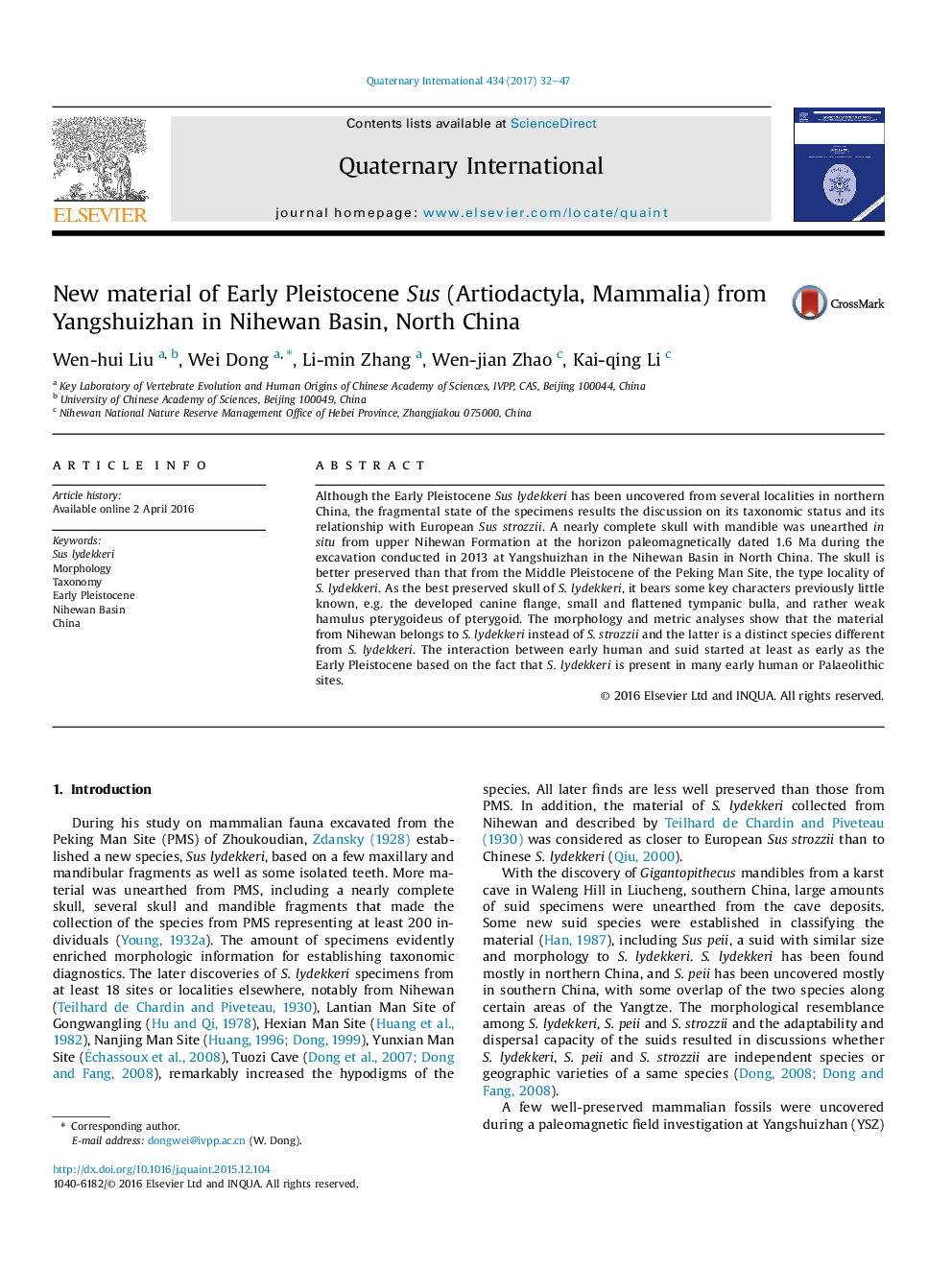| Article ID | Journal | Published Year | Pages | File Type |
|---|---|---|---|---|
| 5113350 | Quaternary International | 2017 | 16 Pages |
Although the Early Pleistocene Sus lydekkeri has been uncovered from several localities in northern China, the fragmental state of the specimens results the discussion on its taxonomic status and its relationship with European Sus strozzii. A nearly complete skull with mandible was unearthed in situ from upper Nihewan Formation at the horizon paleomagnetically dated 1.6 Ma during the excavation conducted in 2013 at Yangshuizhan in the Nihewan Basin in North China. The skull is better preserved than that from the Middle Pleistocene of the Peking Man Site, the type locality of S. lydekkeri. As the best preserved skull of S. lydekkeri, it bears some key characters previously little known, e.g. the developed canine flange, small and flattened tympanic bulla, and rather weak hamulus pterygoideus of pterygoid. The morphology and metric analyses show that the material from Nihewan belongs to S. lydekkeri instead of S. strozzii and the latter is a distinct species different from S. lydekkeri. The interaction between early human and suid started at least as early as the Early Pleistocene based on the fact that S. lydekkeri is present in many early human or Palaeolithic sites.
